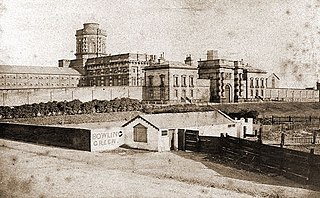 W
WBelle Vue Gaol was a Victorian prison in Gorton, Manchester, England. It operated between 1850 and 1888. It was notorious at the time for abysmal prisoner living conditions. It was demolished in 1892.
 W
WHM Prison Blundeston was a Category C men's prison, located in the Village of Blundeston in Suffolk, England. The prison was operated by Her Majesty's Prison Service, and closed in January 2014.
 W
WThe Bocardo Prison in Oxford, England existed until 1771. Its origins were medieval, and its most famous prisoners were the Protestant Oxford martyrs in 1555.
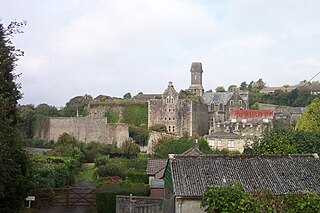 W
WBodmin Jail is an historic former prison situated in Bodmin, on the edge of Bodmin Moor in Cornwall. Built in 1779 and closed in 1927, the large range of buildings is fell into ruin, but parts of the prison have been turned into a tourist attraction, and more recently another large part was converted into a hotel.
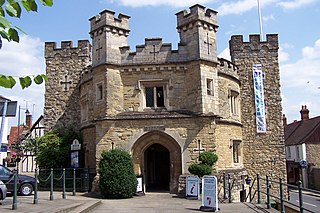 W
WBuckingham Old Gaol, sometimes known as Lord Cobham’s Castle, is an historic building in Buckingham, the former county town of Buckinghamshire, England.
 W
WHM Prison Bullwood Hall is a former Category C women's prison and Young Offenders Institution, located in Hockley, Essex, England. The prison was operated by Her Majesty's Prison Service.
 W
WHMP Isle of Wight – Camp Hill Barracks is a former Category C men's prison, located on the outskirts of Newport, Isle of Wight. The former prison lies adjacent to Albany and Parkhurst, both part of HMP Isle of Wight.
 W
WHMP Canterbury is a former prison in Canterbury, Kent, England. The prison was operated by Her Majesty's Prison Service. The former prison site was bought by Canterbury Christ Church University in April 2014.
 W
WCarlisle Citadel or The Citadel is a former medieval fortress on English Street in Carlisle, Cumbria. It comprises two towers, both of which are Grade I listed buildings: the Nisi Prius Courthouse and the former Crown Court.
 W
WDalton Castle is a grade I listed 14th-century peel tower situated in Dalton-in-Furness, Cumbria, England, and in the ownership of the National Trust. It was constructed by the monks of Furness Abbey for the protection of the nearby market town, and was the building from which the Abbot administered the area and dispensed justice.
 W
WThe term Derby Gaol historically refers to the five gaols in Derby, England. Today, the term usually refers to one of two tourist attractions, the gaol which stood on Friar Gate from 1756 to 1846 and the cells of which still exist and are open to the public as a museum, and the 1843 to 1929 Vernon Street Prison whose impressive frontage can still be seen today.
 W
WHM Prison Dorchester was a local men's prison, located in Dorchester in Dorset, England. The prison was operated by Her Majesty's Prison Service, and closed in January 2014.
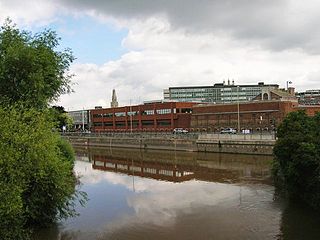 W
WHM Prison Gloucester was a Category B men's prison located in Gloucester, Gloucestershire, England. It was originally opened in 1792, on the site of Gloucester Castle whose keep had been used as a prison.
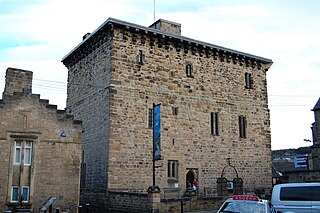 W
WThe Hexham Old Gaol is in the town of Hexham, Northumberland, England. It is reputed to be the oldest purpose-built prison in England.
 W
WHM Prison Lancaster was an English prison located in Lancaster Castle, Lancaster from 1955 to 2011.
 W
WHM Prison Kingston is a former Category B/C men's prison, located in the Kingston area of Portsmouth, in Hampshire, England. Prior to closure, the prison was operated by Her Majesty's Prison Service.
 W
WLancaster Castle is a medieval castle in Lancaster in the English county of Lancashire. Its early history is unclear, but may have been founded in the 11th century on the site of a Roman fort overlooking a crossing of the River Lune. In 1164, the Honour of Lancaster, including the castle, came under royal control. In 1322 and 1389 the Scots invaded England, progressing as far as Lancaster and damaging the castle. It was not to see military action again until the English Civil War. The castle was first used as a prison in 1196 although this aspect became more important during the English Civil War. The castle buildings are owned by the British sovereign as Duke of Lancaster, which leases part of the structure to Lancashire County Council who operate a Crown Court in part of the building.
 W
WLaunceston Castle is located in the town of Launceston, Cornwall, England. It was probably built by Robert the Count of Mortain after 1068, and initially comprised an earthwork and timber castle with a large motte in one corner. Launceston Castle formed the administrative centre of the new earldom of Cornwall, with a large community packed within the walls of its bailey. It was rebuilt in stone in the 12th century and then substantially redeveloped by Richard of Cornwall after 1227, including a high tower to enable visitors to view his surrounding lands. When Richard's son, Edmund, inherited the castle, he moved the earldom's administration to Lostwithiel, triggering the castle's decline. By 1337, the castle was increasingly ruinous and used primarily as a gaol and to host judicial assizes.
 W
WLincoln Castle is a major Norman castle constructed in Lincoln, England, during the late 11th century by William the Conqueror on the site of a pre-existing Roman fortress. The castle is unusual in that it has two mottes. It is one of only two such castles in the country, the other being at Lewes in East Sussex. Lincoln Castle remained in use as a prison and court into modern times and is one of the better preserved castles in England; the Crown Courts continue to this day. It is open to the public most days of the week and possible to walk around the walls from which there are views of the castle complex, cathedral, the city, and surrounding countryside. The castle is now owned by Lincolnshire County Council and is a scheduled monument.
 W
WLydford Castle is a medieval castle in the town of Lydford, Devon, England. The first castle in Lydford, sometimes termed the Norman fort, was a small ringwork built in a corner of the Anglo-Saxon fortified burh in the years after the Norman conquest of England. It was intended to help control Devon following the widespread revolt against Norman rule in 1068. The Norman fort had been abandoned by the middle of the 12th century.
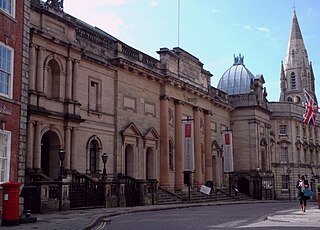 W
WThe National Justice Museum is an independent museum on High Pavement in the Lace Market area of Nottingham, England.
 W
WNorman Cross Prison in Huntingdonshire, England, was the world's first purpose-built prisoner-of-war camp or "depot", built in 1796–97 to hold prisoners of war from France and its allies during the French Revolutionary Wars and Napoleonic Wars. After the Treaty of Amiens the depot was emptied of prisoners and, in 1816, largely demolished.
 W
WNorwich Castle is a medieval royal fortification in the city of Norwich, in the English county of Norfolk. It was founded in the aftermath of the Norman conquest of England when William the Conqueror (1066–1087) ordered its construction because he wished to have a fortified place in the town of Norwich. It proved to be one of his two castles in East Anglia, the other being Wisbech. In 1894 the Norwich Museum moved to Norwich Castle and it has been a museum ever since. The museum & art gallery holds significant objects from the region, especially works of art, archaeological finds and natural history specimens.
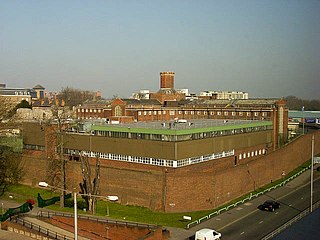 W
WHM Prison Reading, popularly known as Reading Gaol, is a former prison located in Reading, Berkshire, England. The prison was operated by Her Majesty's Prison Service until its closure at the start of 2014. It is a Grade II listed building and sits on the site of Reading Abbey.
 W
WHMP Shepton Mallet, sometimes known as Cornhill, is a former prison located in Shepton Mallet, Somerset, England. When it closed in 2013, it was the United Kingdom's oldest operating prison, and had been since the closure of HMP Lancaster Castle in 2011. Before closure Shepton Mallet was a category C lifer prison holding 189 prisoners. The prison building is grade II* listed, while the former gatehouse and perimeter walls are grade II.
 W
WHM Prison Shrewsbury was a Category B/C men's prison in Shrewsbury, Shropshire, England. It was decommissioned in March 2013, but is now open to the public.
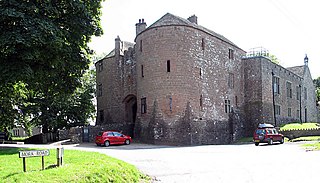 W
WSt Briavels Castle is a moated Norman castle at St Briavels in the English county of Gloucestershire. The castle is noted for its huge Edwardian gatehouse that guards the entrance.
 W
WBlackberry Hill Hospital is an NHS psychiatric hospital in Fishponds, Bristol, England, specialising in forensic mental health services, operated by the Avon and Wiltshire Mental Health Partnership NHS Trust. The hospital also offers drug and alcohol rehabilitation inpatient services, and is the base for a number of community mental health teams.
 W
WTotnes Guildhall is a 16th-century Tudor historic guildhall, magistrate's court, and prison, in the town of Totnes, south Devon, in southwest England. It is a Grade I listed building.
 W
WHMP Weare was an Adult Male/Category C prison ship berthed in Portland Harbour in Dorset, England. It was the latest in a lengthy history of British prison ships, which included HMS Maidstone, used as a prison during Operation Demetrius in the 1970s, HMS Argenta, in use as a prison in the 1920s, and a long list of British prison hulks dating from the late 18th-century to the mid 19th-century.
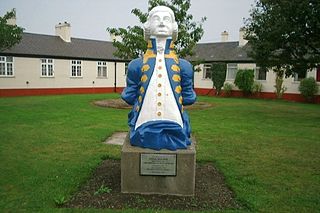 W
WThe Wellesley Nautical School was a naval training school first located on the Tyne, and later removed to Blyth
 W
WThe Wool House is a medieval building in Southampton, Hampshire, England which was built to serve the wool trade. It has since had various uses.